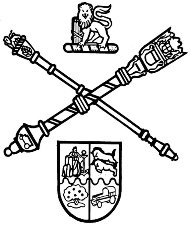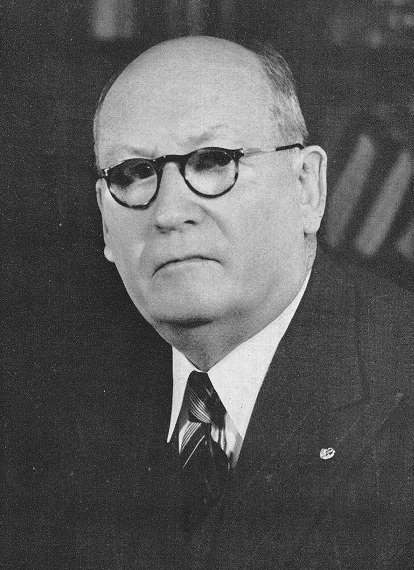|
Native Building Workers Act, 1951
The Native Building Workers Act, 1951 (Act No. 27 of 1951; subsequently renamed the Bantu Building Workers Act, 1951 and the Black Building Workers Act, 1951) formed part of the apartheid system of racial segregation in South Africa. It legalized the training of blacks in skilled labor in the construction industry, but limited the places in which they were permitted to work. Sections 15 and 19 made it an offense for blacks to work in the employ of whites performing skilled labor in their homes. It was repealed by section 11 of the Industrial Conciliation Amendment Act, Act No. 95 of 1980. References Apartheid laws in South Africa 1951 in South African law {{statute-stub ... [...More Info...] [...Related Items...] OR: [Wikipedia] [Google] [Baidu] |
Parliament Of South Africa
The Parliament of the Republic of South Africa is South Africa's legislature; under the present Constitution of South Africa, the bicameral Parliament comprises a National Assembly and a National Council of Provinces. The current twenty-seventh Parliament was first convened on 22 May 2019. From 1910 to 1994, members of Parliament were elected chiefly by the South African white minority. The first elections with universal suffrage were held in 1994. Both chambers held their meetings in the Houses of Parliament, Cape Town that were built 1875–1884. A fire broke out within the buildings in early January 2022, destroying the session room of the National Assembly. The National Assembly will temporarily meet at the Good Hope Chamber. History Before 1910 The predecessor of the Parliament of South Africa, before the 1910 Union of South Africa, was the bicameral Parliament of the Cape of Good Hope. This was composed of the House of Assembly (the lower house) and the Legislati ... [...More Info...] [...Related Items...] OR: [Wikipedia] [Google] [Baidu] |
Minister Of Labour (South Africa)
The Minister of Employment and Labour is a Minister in the Cabinet of South Africa The Cabinet of South Africa is the most senior level of the executive branch of the Government of South Africa. It is made up of the President, the Deputy President, and the Ministers. Overview The President appoints the Deputy President and m .... List of Past Ministers Minister of Labour, 1924-1935 Minister of Labour and Social Welfare, 1935-1937 Minister of Labour, 1937-1976 Minister of Manpower Utilisation, 1976-1994 Minister of Labour, 1994-2019 Minister of Employment of Labour, 2019-present References External linksDepartment of Labour {{SACabinet Lists of political office-holders in South Africa ... [...More Info...] [...Related Items...] OR: [Wikipedia] [Google] [Baidu] |
Industrial Conciliation Amendment Act, 1980
The Industrial Conciliation Act, 1956 (Act No. 28 of 1956; subsequently renamed the Labour Relations Act, 1956), formed part of the apartheid system of racial segregation in South Africa. It prohibited the registration of any new 'mixed' unions and imposed racially separate branches and all-white executive committees on existing 'mixed' unions. It prohibited strikes in 'essential industries' for both black and white workers and banned political affiliations for unions. Clause 77 legalized the reservation of skilled jobs to white workers, as the Bantu Building Workers Act of 1951 had done in the construction trade, 'to ensure that they will not be exploited by the lower standard of living of any other race'. The primary objective of the Industrial Conciliation Act was to separate the trade-union movements along racial lines, with the aim of weakening them. The Act ended recognition of trade unions with white, Coloured and Indian membership. This specified that trade unions with mi ... [...More Info...] [...Related Items...] OR: [Wikipedia] [Google] [Baidu] |
Apartheid
Apartheid (, especially South African English: , ; , "aparthood") was a system of institutionalised racial segregation that existed in South Africa and South West Africa (now Namibia) from 1948 to the early 1990s. Apartheid was characterised by an authoritarian political culture based on ''baasskap'' (boss-hood or boss-ship), which ensured that South Africa was dominated politically, socially, and economically by the nation's minority white population. According to this system of social stratification, white citizens had the highest status, followed by Indians and Coloureds, then black Africans. The economic legacy and social effects of apartheid continue to the present day. Broadly speaking, apartheid was delineated into ''petty apartheid'', which entailed the segregation of public facilities and social events, and ''grand apartheid'', which dictated housing and employment opportunities by race. The first apartheid law was the Prohibition of Mixed Marriages ... [...More Info...] [...Related Items...] OR: [Wikipedia] [Google] [Baidu] |
South Africa
South Africa, officially the Republic of South Africa (RSA), is the southernmost country in Africa. It is bounded to the south by of coastline that stretch along the South Atlantic and Indian Oceans; to the north by the neighbouring countries of Namibia, Botswana, and Zimbabwe; and to the east and northeast by Mozambique and Eswatini. It also completely enclaves the country Lesotho. It is the southernmost country on the mainland of the Old World, and the second-most populous country located entirely south of the equator, after Tanzania. South Africa is a biodiversity hotspot, with unique biomes, plant and animal life. With over 60 million people, the country is the world's 24th-most populous nation and covers an area of . South Africa has three capital cities, with the executive, judicial and legislative branches of government based in Pretoria, Bloemfontein, and Cape Town respectively. The largest city is Johannesburg. About 80% of the population are Black South Afri ... [...More Info...] [...Related Items...] OR: [Wikipedia] [Google] [Baidu] |
Apartheid Laws In South Africa
Apartheid (, especially South African English: , ; , "aparthood") was a system of institutionalised racial segregation that existed in South Africa and South West Africa (now Namibia) from 1948 to the early 1990s. Apartheid was characterised by an authoritarian political culture based on ''baasskap'' (boss-hood or boss-ship), which ensured that South Africa was dominated politically, socially, and economically by the nation's minority white population. According to this system of social stratification, white citizens had the highest status, followed by Indians and Coloureds, then black Africans. The economic legacy and social effects of apartheid continue to the present day. Broadly speaking, apartheid was delineated into ''petty apartheid'', which entailed the segregation of public facilities and social events, and ''grand apartheid'', which dictated housing and employment opportunities by race. The first apartheid law was the Prohibition of Mixed Marriages A ... [...More Info...] [...Related Items...] OR: [Wikipedia] [Google] [Baidu] |



